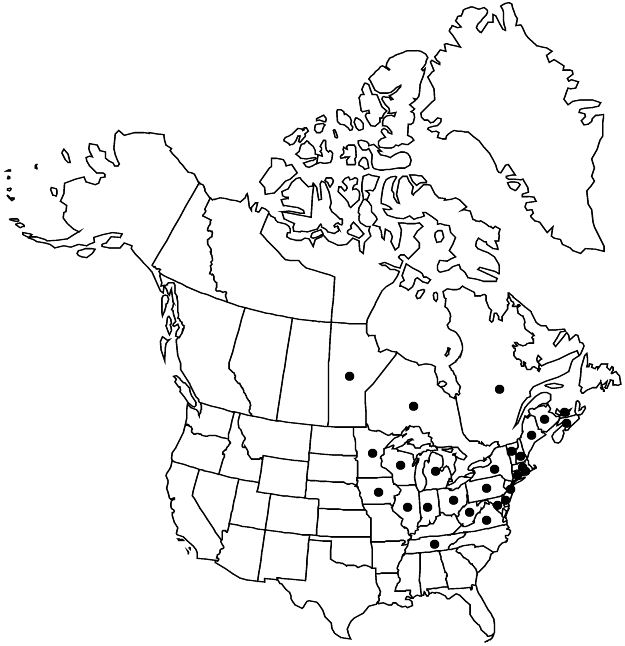Cornus rugosa
Encycl. 2: 115. 1786.
Shrubs, to 5 m, flowering at 1 m; rhizomes present. Stems solitary, 5–10 dm apart; bark pink, light maroon, or green, not corky, loosely verrucose; branchlets yellow-green, with scattered hairs; lenticels protruding on 2d year branches, area surrounding them suffused with purple on older branches; pith white or tan. Leaves: petiole 10–23 mm; blade suborbiculate or broadly ovate, 7–15 × 5–14 cm, base usually subcordate to broadly cuneate, rarely nearly truncate, apex abruptly acuminate, abaxial surface pale green, hairs erect, dense, tufts of erect hairs present in axils of secondary-veins, adaxial surface dark green, hairs appressed or erect; secondary-veins 7–9 per side, evenly spaced, tertiary-veins usually prominent giving leaf a wrinkled appearance. Inflorescences flat-topped, 5–7 cm diam., peduncle 18–35 mm; branches and pedicels pink, turning red in fruit. Flowers: hypanthium constricted below sepals, appressed-hairy; sepals 0.2–0.4 mm; petals white, 2.6–3.8 mm. Drupes pale blue, globose, 5–8 mm diam.; stone globose, 4 mm diam., slightly ribbed, apex dimpled. 2n = 22.
Phenology: Flowering May–Jul; fruiting late Aug–Oct.
Habitat: Wooded slopes, forests, stream banks, lake shores.
Elevation: 0–2000 m.
Distribution

Man., N.B., N.S., Ont., P.E.I., Que., Conn., Del., Ill., Ind., Iowa, Maine, Md., Mass., Mich., Minn., N.H., N.J., N.Y., Ohio, Pa., R.I., Tenn., Vt., Va., W.Va., Wis.
Discussion
Cornus rugosa appears to be extirpated from Tennessee (B. E. Wofford, pers. comm.). Putative hybrids in Michigan between C. rugosa and C. racemosa have been called C. ×friedlanderi W. H. Wagner. Putative hybrids between C. rugosa and C. sericea have been called C. ×slavinii Rehder, and reported from Maine, New York, Ontario, Prince Edward Island, and Wisconsin.
Selected References
None.
Lower Taxa
"dm" is not declared as a valid unit of measurement for this property.